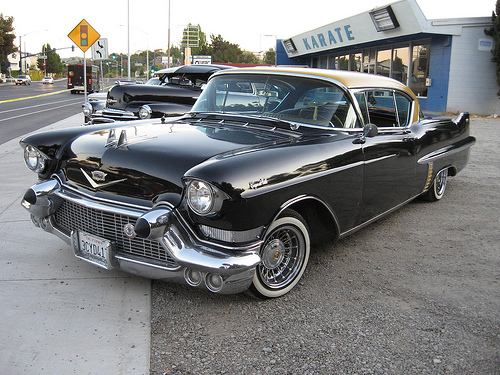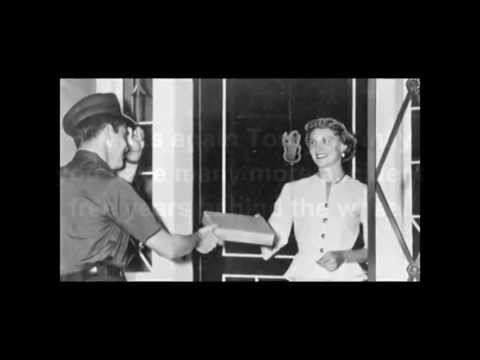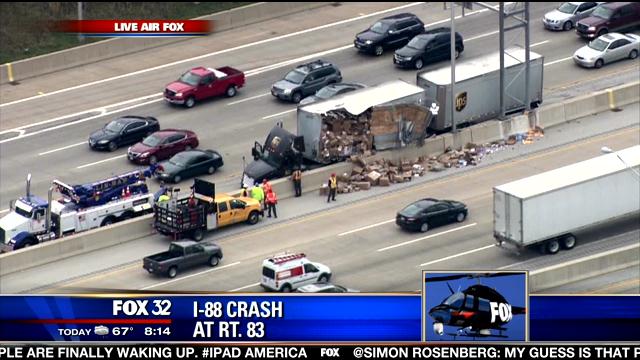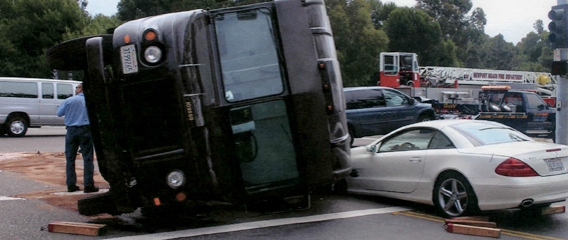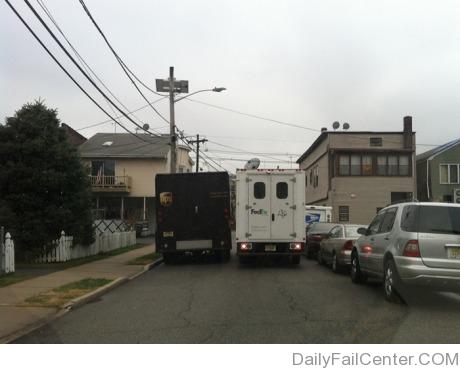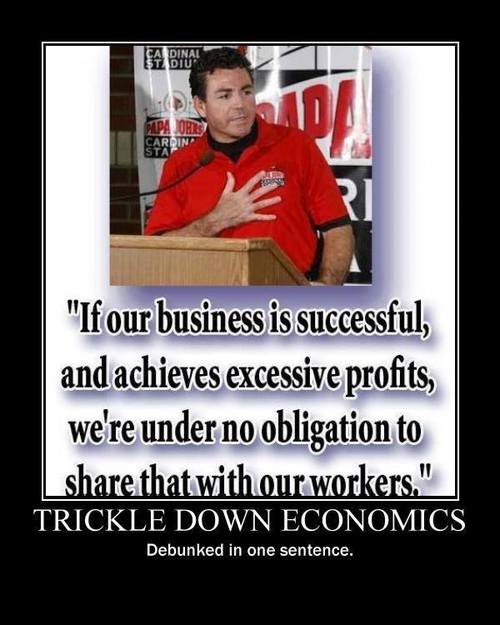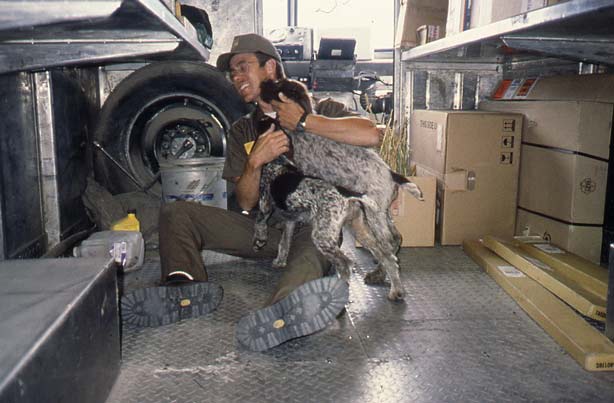Tag Archives: UPS Teamster Pension
You are what you eat
When the world was young
Peeled like a grape
Seen from a new perspective
Hold your breath
Trickle this
This is Papa John, here is a picture of his house. This is the guy who says he will cut hours so that no employees qualify for health insurance and then he doesn’t have to offer it. A corporate welfare King.
A love story
The Package King’s faithful Teamster
In this second article in an occasional series on the history of United Parcel Service and workers’ resistance to Big Brown, explains how company founder James E. Casey brought in the Teamsters union to avoid the threat of greater labor militancy–and found the kind of labor official he wanted to work with in Dave Beck.
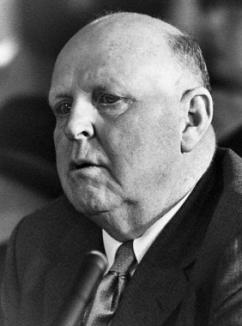 Dave Beck
Dave Beck
“I have no use for class warfare.”
–Dave Beck, Teamster general president, 1952-57
DAVE BECK was an ambitious union politician who more than any other official in the history of the Teamsters was responsible for the union’s cozy relationship with UPS for years. Beck is a largely forgotten figure in Teamster history these days, however. If he’s remembered at all, it’s for facilitating the rise of the more ambitious and ruthless Jimmy Hoffa and his Mafia cohorts into the leadership of the union.
The first UPS drivers and package handlers were brought under a Teamster contract in the San Francisco Bay Area. Beck used his power to bring all UPSers on the West Coast into the Teamsters during that 1930s. From these small beginnings grew the enormous presence of UPSers inside the Teamsters–a literal “union within a union.”
UPS founder Jim Casey and Teamsters leader Dave Beck shared much in common. Both were born in the western United States at the end of the 19th century.
Casey hailed from the remote, windswept mining town of Candelaria, Nev. His Irish immigrant father, Henry, was a failed prospector, like many others–also like many others, he developed a debilitating lung disease from his years in the mines, that disabled him for the rest of his life. The Casey family moved to Seattle, and the dominant figure in the family was Jim’s mother Anne.
Beck was born in Stockton, Calif., in 1894 into an extremely poor family that moved to Seattle when he was four years old. Beck’s father was an unsuccessful businessman–from an early age, Dave had to work to help keep the family afloat.
For both Casey and Beck, Seattle became a launching pad for national careers–one in business and the other in the labor movement.
SEATTLE BECAME a boomtown in the late 1890s because of the Klondike Gold Rush, the last great gold rush on the North American continent. The city was the bustling way station for those heading north to the inhospitable and unforgiving environment of the Yukon province of northwestern Canada and Alaska. Eventually 100,000 prospectors made their way north, many outfitted by legitimate and illegitimate businesses serving the needs of the would-be prospectors.
Casey began his career as a messenger at the age of 11 delivering tea (and opium!) throughout Seattle; he was mentored by an elderly Irishman who taught him the delivery business. In 1907, Casey struck out on his own and founded the American Messenger Service, the foundation of UPS. The younger Dave Beck first became a Teamster in 1914, driving a laundry truck at the age of 18.
Seattle and the Pacific Northwest in the years leading up to the First World War was a bastion of U.S. radical politics and working class militancy.
In 1912, Eugene Debs, the presidential candidate of the Socialist Party, received 900,000 votes nationwide with 40,000 of them in the state of Washington. The Industrial Workers of the World (IWW), popularly known as the “Wobblies,” organized thousands of timbers workers through out the Northwest.
The decade after the end of the Klondike Gold Rush saw the economy of the region stagnate, but it began to boom again with the outbreak of war in Europe in 1914. When the U.S. entered the First World War in 1917, the economy boomed even further, resulting in skyrocketing inflation that ate away at worker’s living standards. An even bigger threat to the lives of radicals, trade unionists and “suspect” ethnic minorities was the legal assault on their constitutional freedoms by the state and federal governments and their vigilante allies.
Despite this hostile atmosphere, the union movement represented by the American Federation of Labor (AFL) grew by 400 percent from 1915 to 1918, while radical and revolutionary ideas spread through the working class. There was widespread support for the Russian Revolution of 1917 in the Pacific Northwest.
The tense political atmosphere exploded in the great Seattle General Strike of 1919, when the working class ran the city from February 6 to February 11. An elected strike committee representing the 110 local unions supporting the strike ran the city for five days. It was an incredible display of the potential of workers to run society, not just negotiate a place in it.
Striking trade unionists inspired non-union workers to join the great strike, including the messengers and deliverymen of Merchants Parcel Delivery, the second name by which UPS was known after it merged with a competing company in 1913. Many strikers and supporters were veterans of the First World War, and wore their military uniforms on the picket lines and demonstrations during the General Strike.
One notable exception was Dave Beck. He had joined the Navy soon after the U.S. entered the war in 1917 and had been stationed in England. He returned to Seattle just in time to attend a meeting of his old Teamster local union, the Laundry and Dye Works Driver Local 566, and argued not to join the general strike–it was the only Teamster local in Seattle that didn’t. Beck was proud of his scabbing on the strike, “I don’t know what I said, but I know damned well that I stood them on their feet, and how good that felt to a punk kid in a sailor outfit.”
Seattle booster and historian Nard Jones wrote, “If the general strike made a deep impression on the average citizen, it made even a deeper one on Beck.” It made Beck into a professional anti-communist and an opponent of militant trade unionism.
– – – – – – – – – – – – – – – –
ACCORDING TO Greg Niemann, the radicalism of the Seattle working class also made an impression on Jim Casey, who renamed his company United Parcel Service in the historic year of 1919. “Remember,” Niemann wrote, he was always watching. He couldn’t have helped but notice the unrest and the reasons underlying it.”
Whether Jim Casey truly understood the “unrest and the reasons underlying it” is subject to debate. Nevertheless, in 1919, faced with a well-organized union presence in the San Francisco Bay Area, Casey, according to Niemann, “invited the Teamsters to represent the several dozen United Parcel Drivers and part-time hourly package-handling employees on Oakland.”
This was a union beachhead at UPS, for the 1920s saw a tidal wave of union-busting, anti-communism and anti-immigrant hysteria that wiped away most of the gains made by the labor movement during the war years.
Some employers, however, also attempted to use modern sociology and psychology in the hopes of blunting the development of militant class-consciousness and making workers impervious to radical ideas. These were largely cosmetic changes to oppressive workplaces; internal employee corporate relations campaigns encouraged the image of a “family” atmosphere, where employees could make suggestions about better operations.
At UPS, the company newsletter The Big Idea was first published in 1924, and employee stock ownership was introduced in 1927, with these goals in mind. During the 1920s, UPS expanded up and down the West Coast from Oakland to Los Angeles, Portland, San Francisco and San Diego, and brought these policies with them.
During the same decade, Dave Beck emerged as a Teamster leader in Seattle and was poised to become the most powerful Teamster official on the West Coast. Historian David Garnel, in his book The Rise of Teamster Power in the West, described Beck’s rise during these years:
Upon his return from the war, Beck resumed laundry wagon driving and became extremely active in Local 566. He was elected to the executive of his local union and through his position regularly attended the Joint Council meetings. In 1923, Beck was elected president of Joint Council 28, an unpaid position which nevertheless offered him many opportunities to use his skills at oratory. His appetite for leadership whetted, he decided to run for secretary-treasurer of his local, and won. Early in 1925, Beck took over as principle officer of Local 566.
Dan Tobin, the conservative, if not outright reactionary, president of International Brotherhood of Teamsters (IBT), took a liking to Beck and appointed him an international organizer, which not only supplemented Beck’s income, but also widened the scope of his duties and influence on the West Coast.
Beck pursued incredibly conservative, pro-business policies that ultimately had a terrible impact on the rank and file of the union. As Dan LaBotz, author of Rank-and-File Rebellion, wrote, Beck was among the union officials who viewed “the employers as collaborators, rather than as adversaries. The union officials came to identify with the boss and his problems, rather than with the worker and his problems. Guided by this philosophy of collaboration, Beck visited all the Teamster union halls urging wage cuts in 1929 when the Crash occurred and the Great Depression began.”
– – – – – – – – – – – – – – – –
IT WASN’T until the mid-1930s that Dave Beck and Jim Casey met face to face to discuss the future of the Teamsters at UPS.
The first beachhead for the Teamsters at UPS was San Francisco, but the city was rocked by a 1934 strike on the San Francisco waterfront–which later spread to almost the entire West Coast–led by Harry Bridges, a well-known radical trade unionist from Australia who was closely allied to the Communist Party. Bridges’ union, later known as the International Longshore and Warehouse Union, not only transformed the notoriously terrible conditions of waterfront work, but threatened the position of the conservative Teamsters in the delivery and warehousing industries.
Faced with this upsurge of radical trade unionism, Jim Casey appears to have made a choice of bargaining with the Teamsters throughout most of the West Coast. But he hit a snag in Los Angeles, a violently anti-union city at the time. Dave Beck later told his biographer John McCallumin that the Teamsters were able to organize UPS from Seattle down the coast to San Francisco-Oakland. “But when it came time to go into Los Angeles,” Beck said, “we hit a brick wall. I mean, we couldn’t make a dent.”
Casey apparently feared the prospect of being ostracized by the powerful Merchants and Manufacturers Association in Los Angeles, which vigilantly policed all businesses to make sure LA remained union-free.
Beck met with Casey, and Casey refused to budge–but he threw the ball back into Beck’s court, saying, “I don’t know, you figure it out.” Beck replied, “That’s exactly what I’m going to do.” Beck says he told Casey to tell the association leaders that when UPS contracts expired throughout the West Coast, “we are either going to work for UPS in Los Angeles on the same conditions as in other cities or we are not going to work for you in any other city.”
According to Beck, the association leaders promised to underwrite UPS against any strike by the Teamsters in LA, but that Casey told the employers’ group, “If I have to fight the Teamsters in the western part of the United States, and later on maybe all over the country, I’ll have to sign with the Teamsters and take my chances with you here in LA.” Beck declared, “[F]rom that day to this, we’ve been organized with no interruptions or major labor disturbances of any significance. Soon after, we did identically the same thing with all the major companies there.”
This highly effective strategy for gaining union recognition was taken straight from the playbook of Minneapolis Teamsters, led by revolutionary socialists such the Dunne brothers, Farrell Dobbs and Carl Skoglund. Beck would later play a central role in expelling socialists from the Teamsters in the early 1940s, but he wasn’t averse to stealing their strategies while hating their politics.
Beck became more remote and conservative, as he grew more powerful. Historian Murray Morgan, in his “Skid Road: An Informal History of Seattle,” captured the changing personality and lifestyle of the once poor kid:
[Beck’s] observance of the rituals of being rich became more conspicuous. His clothes grew richer and better tailored, his office larger and more deep-toned, his cars longer, his phone conversations curter, his invitations to the annual Round Up Party at the Washington Athletic Club–a must for business and political leaders–more peremptory. It was during this period that Dave Beck moved from the modest frame house which had pinned him to the middle class, into a new Sheridan Beach estate with private pool, private cinema, even sumptuous private quarters for his private bodyguards.
Wealth and power fed arrogance and contempt toward the union members Beck claimed to represent: “Why should truck drivers and bottle washers be allowed to make decisions affecting [Teamster] policy?” he demanded to know. “No corporation would allow it.”

